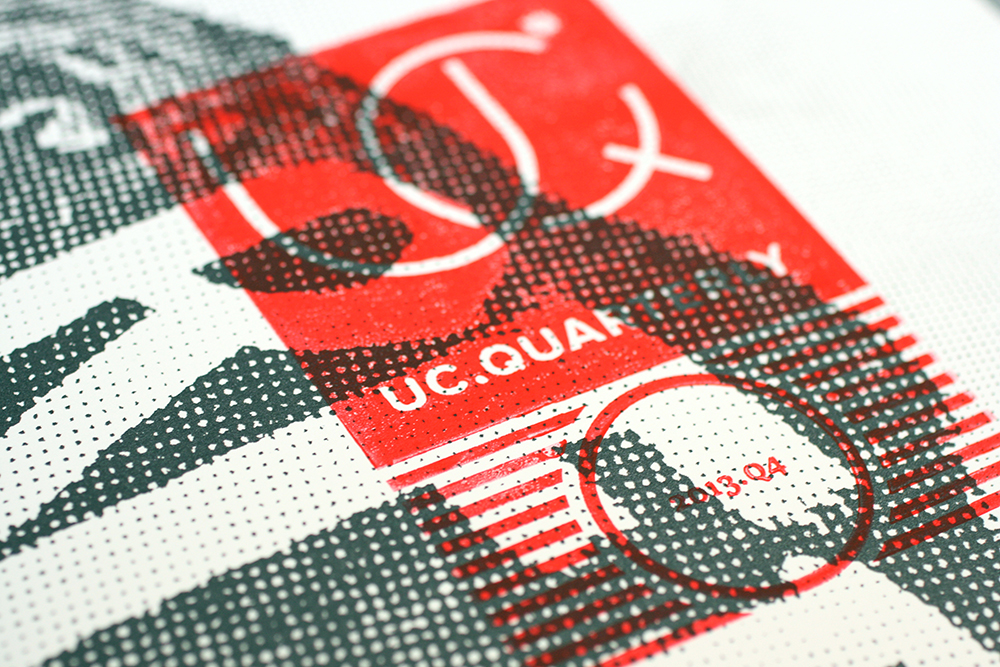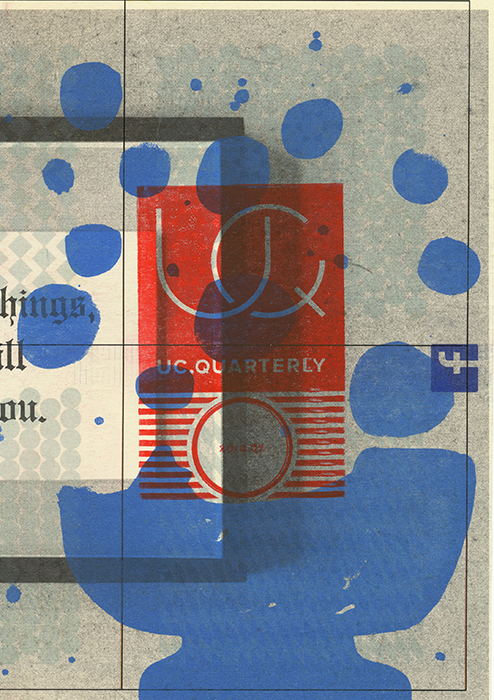Bryony Gomez-Palacio: “I’d much rather collaborate with a single person and go over a concept while washing dishes, than sit in a meeting room for hours.” Armin Vit: “It’s also a very honest exchange; we have no time for worrying about each other’s feelings.”
Bryony Gomez-Palacio + Armin Vit: Principals, UnderConsideration / Austin TX
underconsideration.com
bryony gomez-palacio: “i’d much rather collaborate with a single person and go over a concept while washing dishes, than sit in a meeting room for hours.” armin vit: “it’s also a very honest exchange; we have no time for worrying about each other’s feelings.”
What is the Armin+Bryony collaborative design process?
Armin: It’s both minimal and maximal. We divide tasks, and I’m usually in charge of the designing aspect and the building of our websites. I work double the hours of Bryony because she takes care of our kids in the afternoon. So we rarely sit down to “brainstorm” or work hand-in-hand on projects; since it’s only the two of us, we make decisions together throughout the day, every day, wherever we are. When it comes to design, I’ll do a few options and show them to her. Within three minutes, we have a decision to move forward with something or not. It’s also a very honest exchange; we have no time for worrying about each other’s feelings.
Bryony: Feelings aside, we also know when the other is slacking, or when things could be better, and we don’t bullshit or tip-toe around it. We don’t stroke any egos. We call each other out and don’t cut any slack. We have gotten to a point where we are able to critique each other’s work with complete sincerity, especially when something is not good enough. Having said that, we allow each other a lot of freedom, and we really try to do things that are a bit risky and different.
UC Quarterly
courtesy of uc
How do you collaborate on writing?
Armin: For the most part, I do the bulk of the writing on the blogs; again, I have more time on my schedule, so that makes me the default writer. Of the books that we’ve written together—like Women of Design and Graphic Design, Referenced—we just split things up and write independently. As disappointing as it may be, there is really no magical moment where our minds meld together to write beautiful design poetry. It’s very nuts-and-bolts.
What about co-managing your studio?
Armin: Bryony is in charge of the administration of the business and the logistics of our events and competitions. I’m in charge of designing and producing. When I have time, I do some administrating, and when Bryony has time, she does some designing. But, again, it comes down to how we’ve divided our work/home lifestyle, where our kids are not shipped to daycare 12 hours of the day, but instead come home at 1:00 PM and Bryony, who is a great mom, takes care of them. Since much of our work resides online, and I’m the HTML/CSS person in the relationship, I have more work duties.
Bryony: I can’t code to save my life, but man am I good at finger-painting. Kidding aside, dividing our tasks comes naturally by taking advantage of individual strengths and realistic expectations. I would love to have more time to design, but it is hard to really dig deep creatively when your longest uninterrupted chunk of time is three hours. I stopped giving lectures while the babies ruled our house; now that they are older, I can leave for a few days and the world does not fall apart. It has been a priority for both of us to have a strong presence with our kids, especially during their formative years. The other thing we focus a lot on, is efficiency. We often hear people say they don’t know how we can produce as much as we can, and the simple answer to that is that not a minute is wasted. We are very aware of every little bit of time that can be used, and we try to use it as best as we can.
How does the scale of UnderConsideration affect collaboration, compared to your NYC studio experiences?
Armin: I guess the answer is evident: the more people there are, the more collaboration there has to be, so that everyone contributes to the project. In my experience, however, the LESS people there are working on a project, the better it evolves and comes out. I really enjoy having a single, additional decision-maker in the process who lets me do whatever I want—except when I’m doing shitty work; then she lays down the law.
Bryony: What can I say, I can’t stand shitty work. And I can’t stand meetings. The bigger the studio, or the client, or the team behind the project, the more meetings you have. And meetings are, for the most part, a waste of time. I’d much rather collaborate with a single person and go over a concept while washing dishes, than sit in a meeting room for hours.
How do your individual design philosophies compliment each other?
Armin: We have very similar ideas of what’s good or funny or interesting, and we tend to agree with each other more often than not. So rather than one being complementary to the other, we encourage each other. Bryony is very crafty and good with her hands, whereas I can’t glue two sticks together to save my life. One good example of this was the identity for the 2013 Brand New Conference, where I had designed a pixel-based logo and background pattern that was very clean and computer-y, and for the program, Bryony suggested that we take the logo and sew it onto each cover, by hand. I would have never thought of that solution, mainly because I couldn’t imagine actually executing it.
Bryony: It helps that we have the same goals, and those might go beyond the project, such as pushing each other creatively or testing the comfort boundaries within the industry. We are like a pin-ball machine, always bouncing forward, trying to get farther and farther ahead.
How do you think collaboration in design has evolved?
Bryony: In a rose-colored world, we would all hold hands and work together for a better tomorrow. But we don’t. Unfortunate or not, that is the reality. Kudos to those who can actually do it, but from what I have personally experienced, most get stuck in the dreamy stage and can’t get past the bureaucracy that any dream will encounter. So go ahead and have lively discussions over a beer, but focus on the work while at work.
What kind of design work do you actively seek?
Armin: If we take on client work, I always enjoy a good corporate identity project. It’s fun to try to summarize a company through a logo and its visual assets. But we don’t actively seek it, since most of our time is devoted to our own projects, where we try to do things that are both interesting and missing from the industry. We try to not do anything that’s gratuitous or repetitive; if we can’t add a point of differentiation, we won’t actively seek a project out of it.
Bryony: We like things that we haven’t done before, be it for ourselves or a client.
How would you teach a course on Collaborative Design Process?
Armin: Ha! I wouldn’t. It would literally be a nightmare for me. I’m a loner. Ask me to teach a course on the Loner Design Process and I’m your man.
Bryony: I pretty much agree with Armin on this one. We all need to know how to work with each other, how to respect ideas, solutions, opinions, etc., and how to accept criticism and feedback, but in the end, the strongest work will come from the strongest individual.



